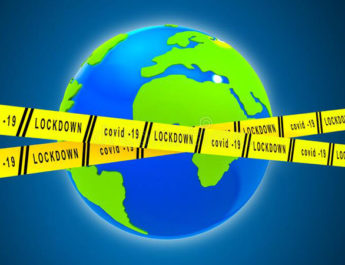Newstricky| The Mars 2020 Perseverance rover has started its mission to the Red Planet. It means that this helicopter will be helpful for the explorers in the Mass exploration. Its journey is 293 million miles. After completing this journey of 293 million miles, NASA’s helicopter will be at its new planetary home. This spacecraft will complete its journey in 43 days and reach the Red Planet on February 18, 2021. It will touch its surface gently. NASA’s team is also working on landing this spacecraft at the most suitable place on Mars. Here, we will discuss seven things you should know about NASA’s Mars helicopter mission.
Table of Contents
1. It Is Searching For Signs Of Ancient Life:
The land of Mars now is frozen. But NASA’s scientists had learned something from their previous missions. According to them, there was water and a warmer environment on Mars. These conditions are helpful for the existence of microbial life. That’s why they are trying to know whether there are signs of microbial life on Mars or not. They have sent a new suite of cutting-edge instruments in this spacecraft to answer this question. They will try to find the potential signs of past life on Mars. After getting answers to these questions, they can also get an idea about the chemical composition of the rocks and sediments on Mars.
2. It Will Land At The Place With High Potential For Microbial Life:
According to scientists, it will be a challenge for them to land this helicopter on Mars. But with the help of new technologies, scientists can easily target their landing sites accurately. As a result, they can save the spacecraft from landing hazards. They will try to land the spacecraft on the land of 28 miles wide basin. On this land, there are cliffs, boulder fields, and dunes. According to scientists, a river flowed here almost three and a half billion years ago. There were a collection and preservation of the organic molecules. Moreover, there were also some other signs of microbial life.
3. It Will Collect Important Data About the Geology And Climate Of Mars:
NASA has taken images of Mars. When they inspect these images closely, they have found some signs of life. The scientists started to read the geological history and past climate conditions of Mars. When they read about these things, they knew about the history of this planet in the distant past. The scientists have explained some similarities between the climate and geology of the earth and Mars. They have also started to read the geology and climate of the Red Planet in-depth. When they study the geology and climate of the Red Planet, they will get to know how these planets ended up differently with these similarities.
4. It Will Make A Round Trip To Mars:
If NASA’s scientists want to verify the ancient life on Mars, they must find its proof, and it is one of the main missions of this spacecraft to gather proof of the existence of life on Mars. It will take rock samples the size of chalk from Mars and keep them in test tubes. After taking these samples, it will return these samples to the land. When these samples reach the earth, scientists can examine these samples with too large and complex instruments. As a result, they can get more sophisticated information about the existence of life on Mars.
5. It Carries Future-Looking Instruments And Technologies:
NASA’s Mars helicopter uses future-looking instruments and technologies as told by an assignment help firm. These future-looking instruments and technologies are helpful for the mission. They have used the Terrian-Relative Navigation system. With the help of this navigation system, NASA’s Mars helicopter can easily comprehend its location over the Martian surface. Moreover, it can also modify its trajectory. It also has more autonomy than any other rover. It has self-driving smarts. These self-driving smarts are helpful for it to cover more ground. It can cover this distance with fewer instruments which means that it has a fast-transverse capability. It will make the exploration of Mars more efficient. It also has MOXIE. It is a technological experiment that can produce Oxygen from the Martian’s Carbon dioxide. If it completes its mission, it will open up new doors of exploration on Mars.
6. It Embodies The NASA And Scientific:
NASA’s scientists launched this spacecraft during the pandemic. It gives us a clue that scientists are looking for signs of life. That’s why they are trying to collect samples from Mars. Here, we should keep in mind that only fifty percent of the Martian space missions have succeeded in inspiring team members. They have inspired the team members by giving examples of the recent challenges the entire world faces. That’s why we can say that this mission is in the honor of the medical community working around the globe. The team members have also inspired the whole world.
7. You, Will, Get To Ride Along:
scientists have used cameras in all interplanetary missions. Scientists have used more cameras in it than any other spacecraft. As a result, more images of this mission will be available on NASA’s website. If all goes well, you can also see what will happen when you land on Mars. They have also used off-the-shelf microphones. With the help of these microphones, you can also listen to the landing sound of the spacecraft. Scientists can also listen to the wind with the help of these microphones. They have also used a microphone at the SuperCam. By using this microphone, scientists can understand the property of the rocks.
Final thought:
NASA is sending the first helicopter to Mars. The Ingenuity Mars Helicopter will hitch a ride to the Red Planet on July’s Perseverance rover mission. It’s possibly the most challenging interplanetary aircraft ever created. Hopefully, it will fulfill its mission and return with some great findings.




